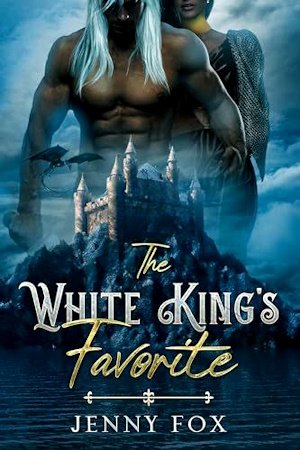To Be on Your Own
“The best thing ever to happen to Steve is when we fired him, told him to get lost,” Arthur Rock later said.
The theory, shared by many, is that the tough love made him wiser and more mature. But it’s not that simple. At the company he founded after being ousted from Apple, Jobs was able to indulge all of his instincts, both good and bad. He was unbound. The result was a series of spectacular products that were dazzling market flops. This was the true learning experience.
What prepared him for the great success he would have in Act III was not his ouster from his Act I at Apple but his brilliant failures in Act II.
The first instinct that he indulged was his passion for design. The name he chose for his new company was rather straightforward: Next. In order to make it more distinctive, he decided he needed a world-class logo. So he courted the dean of corporate logos, Paul Rand. At seventy-one, the Brooklyn-born graphic designer had already created some of the best-known logos in business, including those of Esquire, IBM, Westinghouse, ABC, and UPS. He was under contract to IBM, and his supervisors there said that it would obviously be a conflict for him to create a logo for another computer company. So Jobs picked up the phone and called IBM’s CEO, John Akers. Akers was out of town, but Jobs was so persistent that he was finally put through to Vice Chairman Paul Rizzo. After two days, Rizzo concluded that it was futile to resist Jobs, and he gave permission for Rand to do the work.
Steve Jobs by Walter Isaacson 294
Rand flew out to Palo Alto and spent time walking with Jobs and listening to his vision. The computer would be a cube, Jobs pronounced. He loved that shape. It was perfect and simple. So Rand decided that the logo should be a cube as well, one that was tilted at a 28° angle. When Jobs asked for a number of options to consider, Rand declared that he did not create different options for clients. “I will solve your problem, and you will pay me,” he told Jobs. “You can use what I produce, or not, but I will not do options, and either way you will pay me.”
Jobs admired that kind of thinking, so he made what was quite a gamble. The company would pay an astonishing $100,000 flat fee to get one design. “There was a clarity in our relationship,” Jobs said. “He had a purity as an artist, but he was astute at solving business problems. He had a tough exterior, and had perfected the image of a curmudgeon, but he was a teddy bear inside.” It was one of Jobs’s highest praises: purity as an artist.
It took Rand just two weeks. He flew back to deliver the result to Jobs at his Woodside house. First they had dinner, then Rand handed him an elegant and vibrant booklet that described his thought process. On the final spread, Rand presented the logo he had chosen. “In its design, color arrangement, and orientation, the logo is a study in contrasts,” his booklet proclaimed. “Tipped at a jaunty angle, it brims with the informality, friendliness, and spontaneity of a Christmas seal and the authority of a rubber stamp.” The word
“next” was split into two lines to fill the square face of the cube, with only the “e” in lowercase. That letter stood out, Rand’s booklet explained, to connote
“education, excellence . . . e = mc2.”
It was often hard to predict how Jobs would react
Steve Jobs by Walter Isaacson 295
to a presentation. He could label it shitty or brilliant; one never knew which way he might go. But with a legendary designer such as Rand, the chances were that Jobs would embrace the proposal. He stared at the final spread, looked up at Rand, and then hugged him.
They had one minor disagreement: Rand had used a dark yellow for the “e” in the logo, and Jobs wanted him to change it to a brighter and more traditional yellow.
Rand banged his fist on the table and declared, “I’ve been doing this for fifty years, and I know what I’m doing.” Jobs relented.
The company had not only a new logo, but a new name. No longer was it Next. It was NeXT. Others might not have understood the need to obsess over a logo, much less pay $100,000 for one. But for Jobs it meant that NeXT was starting life with a world-class feel and identity, even if it hadn’t yet designed its first product. As Markkula had taught him, a great company must be able to impute its values from the first impression it makes.
As a bonus, Rand agreed to design a personal calling card for Jobs. He came up with a colorful type treatment, which Jobs liked, but they ended up having a lengthy and heated disagreement about the placement of the period after the “P” in Steven P. Jobs. Rand had placed the period to the right of the “P.”, as it would appear if set in lead type. Steve preferred the period to be nudged to the left, under the curve of the “P.”, as is possible with digital typography. “It was a fairly large argument about something relatively small,” Susan Kare recalled. On this one Jobs prevailed.
In order to translate the NeXT logo into the look of real products, Jobs needed an industrial designer he trusted. He talked to a few possibilities, but none of them impressed him as much as the wild Bavarian he had imported to Apple: Hartmut Esslinger, whose
Steve Jobs by Walter Isaacson 296
frogdesign had set up shop in Silicon Valley and who, thanks to Jobs, had a lucrative contract with Apple.
Getting IBM to permit Paul Rand to do work for NeXT
was a small miracle willed into existence by Jobs’s belief that reality can be distorted. But that was a snap compared to the likelihood that he could convince Apple to permit Esslinger to work for NeXT.
This did not keep Jobs from trying. At the beginning of November 1985, just five weeks after Apple filed suit against him, Jobs wrote to Eisenstat and asked for a dispensation. “I spoke with Hartmut Esslinger this weekend and he suggested I write you a note expressing why I wish to work with him and frogdesign on the new products for NeXT,” he said.
Astonishingly, Jobs’s argument was that he did not know what Apple had in the works, but Esslinger did.
“NeXT has no knowledge as to the current or future directions of Apple’s product designs, nor do other design firms we might deal with, so it is possible to inadvertently design similar looking products. It is in both Apple’s and NeXT’s best interest to rely on Hartmut’s professionalism to make sure this does not occur.” Eisenstat recalled being flabbergasted by Jobs’s audacity, and he replied curtly. “I have previously expressed my concern on behalf of Apple that you are engaged in a business course which involves your utilization of Apple’s confidential business information,” he wrote. “Your letter does not alleviate my concern in any way. In fact it heightens my concern because it states that you have ‘no knowledge as to the current or future directions of Apple’s product designs,’
a statement which is not true.” What made the request all the more astonishing to Eisenstat was that it was Jobs who, just a year earlier, had forced frogdesign to abandon its work on Wozniak’s remote control device.
Jobs realized that in order to work with Esslinger
Steve Jobs by Walter Isaacson 297
(and for a variety of other reasons), it would be necessary to resolve the lawsuit that Apple had filed.
Fortunately Sculley was willing. In January 1986 they reached an out-of-court agreement involving no financial damages. In return for Apple’s dropping its suit, NeXT agreed to a variety of restrictions: Its product would be marketed as a high-end workstation, it would be sold directly to colleges and universities, and it would not ship before March 1987. Apple also insisted that the NeXT machine “not use an operating system compatible with the Macintosh,” though it could be argued that Apple would have been better served by insisting on just the opposite.
After the settlement Jobs continued to court Esslinger until the designer decided to wind down his contract with Apple. That allowed frogdesign to work with NeXT at the end of 1986. Esslinger insisted on having free rein, just as Paul Rand had. “Sometimes you have to use a big stick with Steve,” he said. Like Rand, Esslinger was an artist, so Jobs was willing to grant him indulgences he denied other mortals.
Jobs decreed that the computer should be an absolutely perfect cube, with each side exactly a foot long and every angle precisely 90 degrees. He liked cubes. They had gravitas but also the slight whiff of a toy. But the NeXT cube was a Jobsian example of design desires trumping engineering considerations.
The circuit boards, which fitted nicely into the traditional pizza-box shape, had to be reconfigured and stacked in order to nestle into a cube.
Even worse, the perfection of the cube made it hard to manufacture. Most parts that are cast in molds have angles that are slightly greater than pure 90
degrees, so that it’s easier to get them out of the mold (just as it is easier to get a cake out of a pan that has angles slightly greater than 90 degrees). But Esslinger
Steve Jobs by Walter Isaacson 298
dictated, and Jobs enthusiastically agreed, that there would be no such “draft angles” that would ruin the purity and perfection of the cube. So the sides had to be produced separately, using molds that cost $650,000, at a specialty machine shop in Chicago. Jobs’s passion for perfection was out of control. When he noticed a tiny line in the chassis caused by the molds, something that any other computer maker would accept as unavoidable, he flew to Chicago and convinced the die caster to start over and do it perfectly. “Not a lot of die casters expect a celebrity to fly in,” noted one of the engineers. Jobs also had the company buy a $150,000
sanding machine to remove all lines where the mold faces met and insisted that the magnesium case be a matte black, which made it more susceptible to showing blemishes.
Jobs had always indulged his obsession that the unseen parts of a product should be crafted as beautifully as its façade, just as his father had taught him when they were building a fence. This too he took to extremes when he found himself unfettered at NeXT.

























